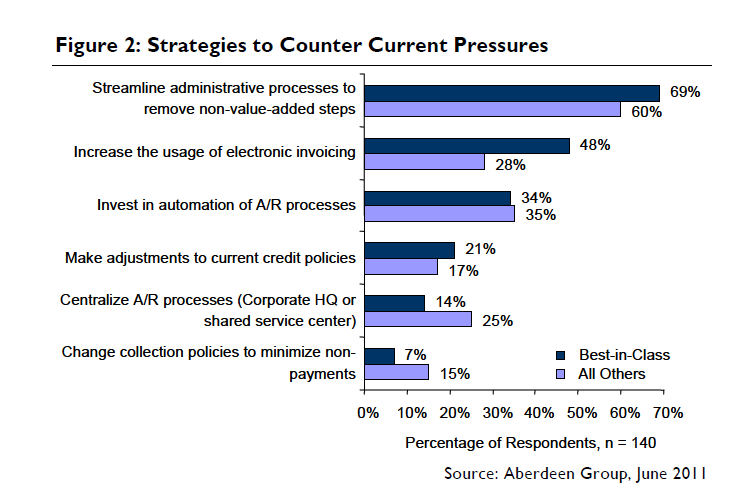The Order-to-Cash Cycle
Formalizing Processes for Improvement in Accounts Receivable
For most organizations, accounts receivable is one of the largest assets on the balance sheet. So how can they efficiently convert this asset to cash, while minimizing bad debt expense? Based on the responses of 140 professionals gathered in May and June of 2011, this study investigates the question directly by investigating the possibilities of asset to cash conversion performance, while uncovering the best practices employed by top-performing organizations that can effectively manage their Order-to-Cash cycles.
Featured Insight of the Day
Figure 2 (below) details the approaches most companies are taking in order to reduce overall costs. It seems that the overall consensus is that companies must first streamline their administrative processes in order to achieve successful implementation of other automation systems or technology to improve accounts receivable. Following the streamlining of processes, we notice that the next steps of most Best-in-Class companies will be to increase the usage of eInvoicing and/or invest in the automation of A/R processes.
How Demand Metric Can Help
If you are trying to improve your order-to-cash cycle, take a look at these tools:
Credit Card Payment Form Template
Sales Operations Process Audit
Next Steps?
If you are currently a member of Demand Metric and would like to learn more about how you can read the rest of this Analyst Insight and get access to over 6500 additional reports in the Aberdeen Research Vault, click here.
To learn more about the Aberdeen Research Vault, click here.
To learn more about Demand Metric, click here.
To purchase and/or read the rest of this report, click the image below:



